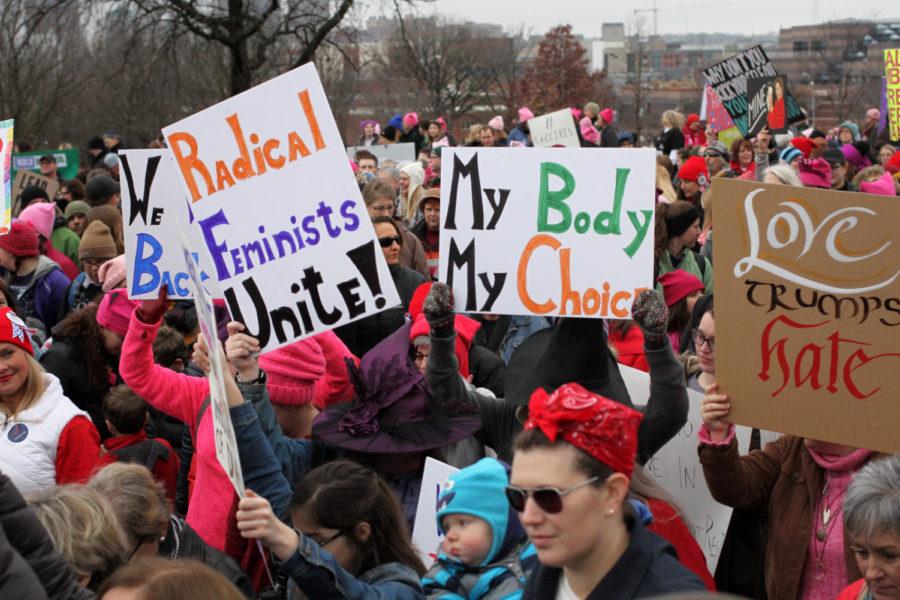Editorial: Abortion restrictions only cause harm
Thousands hold signs relating to women’s health during the Women’s March on the Iowa Capitol on Jan. 21.
February 1, 2017
The question of how much abortion rights would be stymied in the Trump administration was answered quickly in the new president’s first whirlwind week in office, and the implications for what remains a safe, legal procedure will be devastating for people seeking reproductive health care worldwide.
Before Donald Trump took office, Rep. Steve King introduced the first federal “heartbeat bill” in Congress on Jan. 12. The proposal would effectively make abortion completely illegal — the six-week limit is before most people know they are pregnant. Similar bills have been introduced at the state level, including in North Dakota and Ohio, but such restrictive bans have been deemed unconstitutional in court.
On Jan. 23, the president signed an executive order that eliminated federal funding for “foreign, non-governmental organizations that provide abortion services.” Known as the Mexico City policy or the global gag rule, the law has been in place since the Reagan administration (though both Democratic presidents since have rescinded it during their presidencies). It applies even if that “service” is simply discussing abortion as an option, and in a new addition, even if no U.S. funding is used for these services.
On Jan. 24, the U.S. House of Representatives passed H.R. 7, making the Hyde Amendment permanent. Until then, this legislation, which prevents federal taxpayer money from funding abortions, had to be renewed every year as part of the federal budget. Iowa legislators are currently debating a bill that would block funding from abortion providers including Planned Parenthood.
Making abortion illegal or more difficult to get will not make the need for abortion go away; it will only make accessing it more dangerous. The legal “end” to abortion that “pro-life” individuals see as their goal will not end the practice of abortion, as defunding clinics like Planned Parenthood that provide contraception services means fewer people have the means to prevent pregnancy.
To this point, recent studies suggest that it is access to contraception, not abortion restrictions, that has led to the recent decline in abortions in the United States. If the Affordable Care Act is repealed, and its replacement reinstates pregnancy as a pre-existing condition or does not include a birth control mandate, the need for abortions will rise.
When Kermit Gosnell’s clearly illegal abortion clinic was exposed in 2013, we got a look at what happens when people desperate to end their pregnancies go to any means possible to accomplish their goal. Yet this type of situation — including the 13 percent of maternal deaths worldwide the World Health Organization attributes to unsafe abortion — is what anti-abortion rights proponents willfully ignore in pushing through regulations targeting abortion access.
“Pro-life” policies should afford people full reproductive care from comprehensive sex education in schools, to readily accessible contraception, to safe abortion. But instead, lawmakers empowered by the Trump administration are choosing to prioritize their own statistically-unpopular views without regard for those who will demonstrably suffer as a result.
















